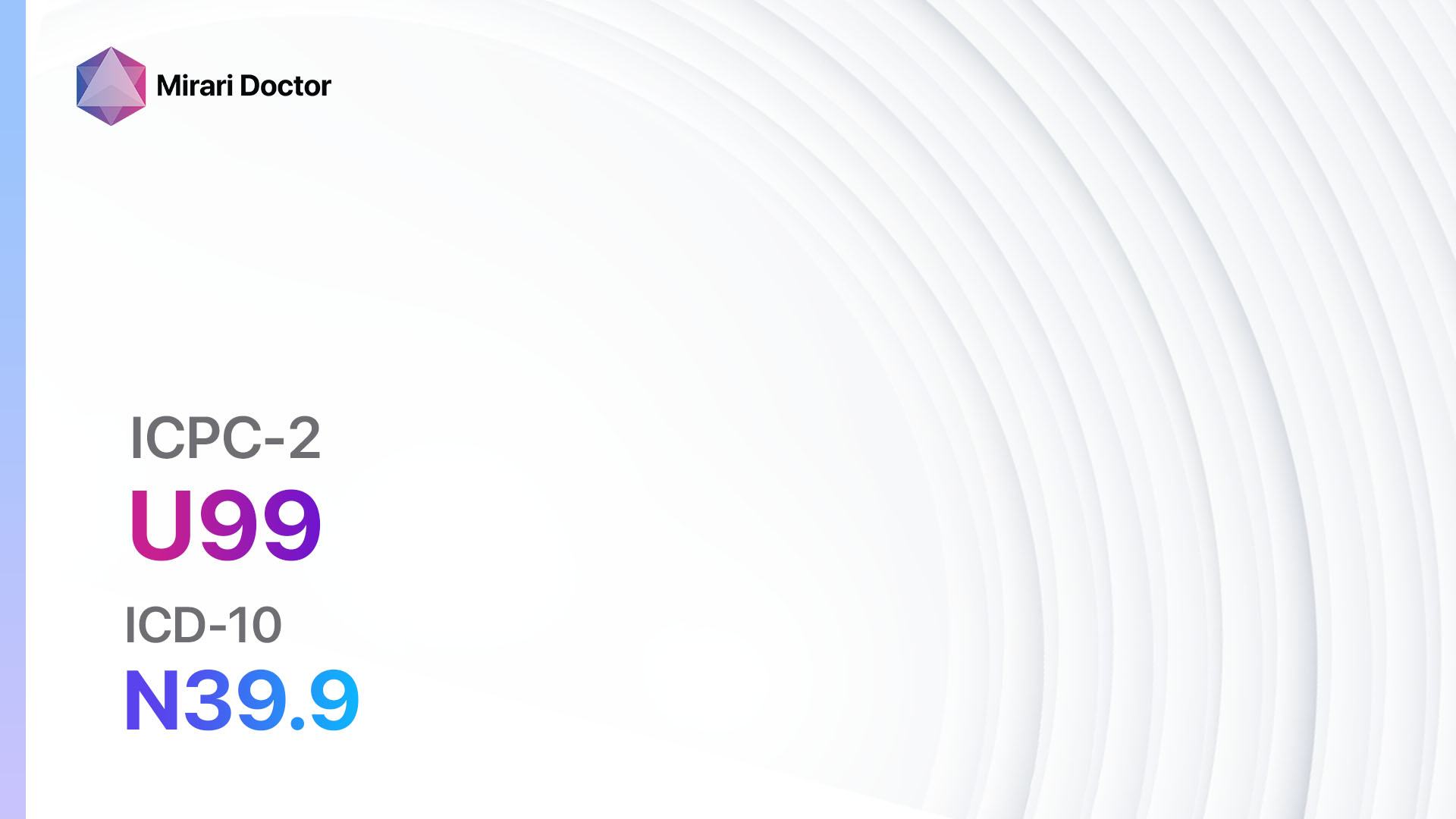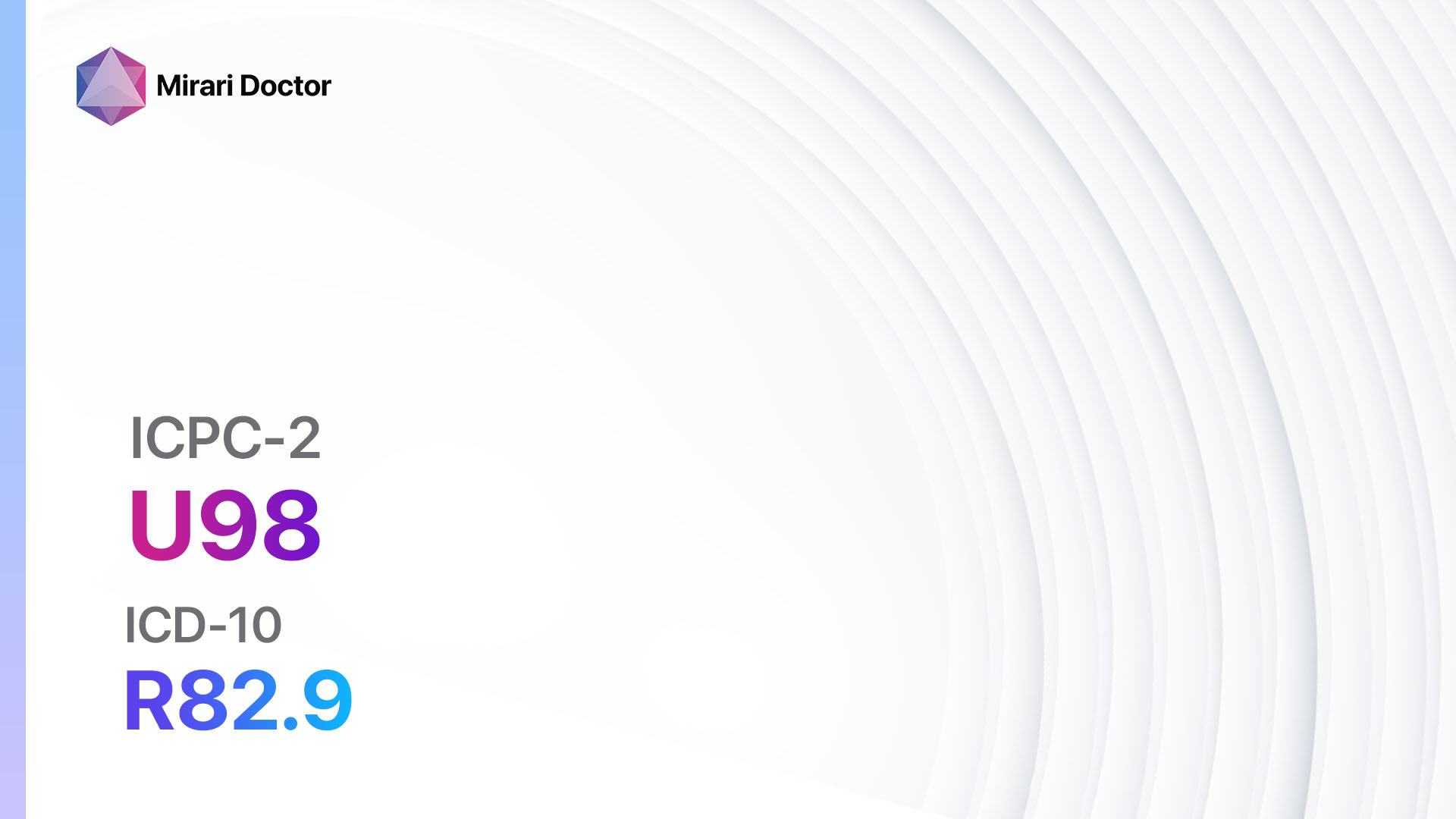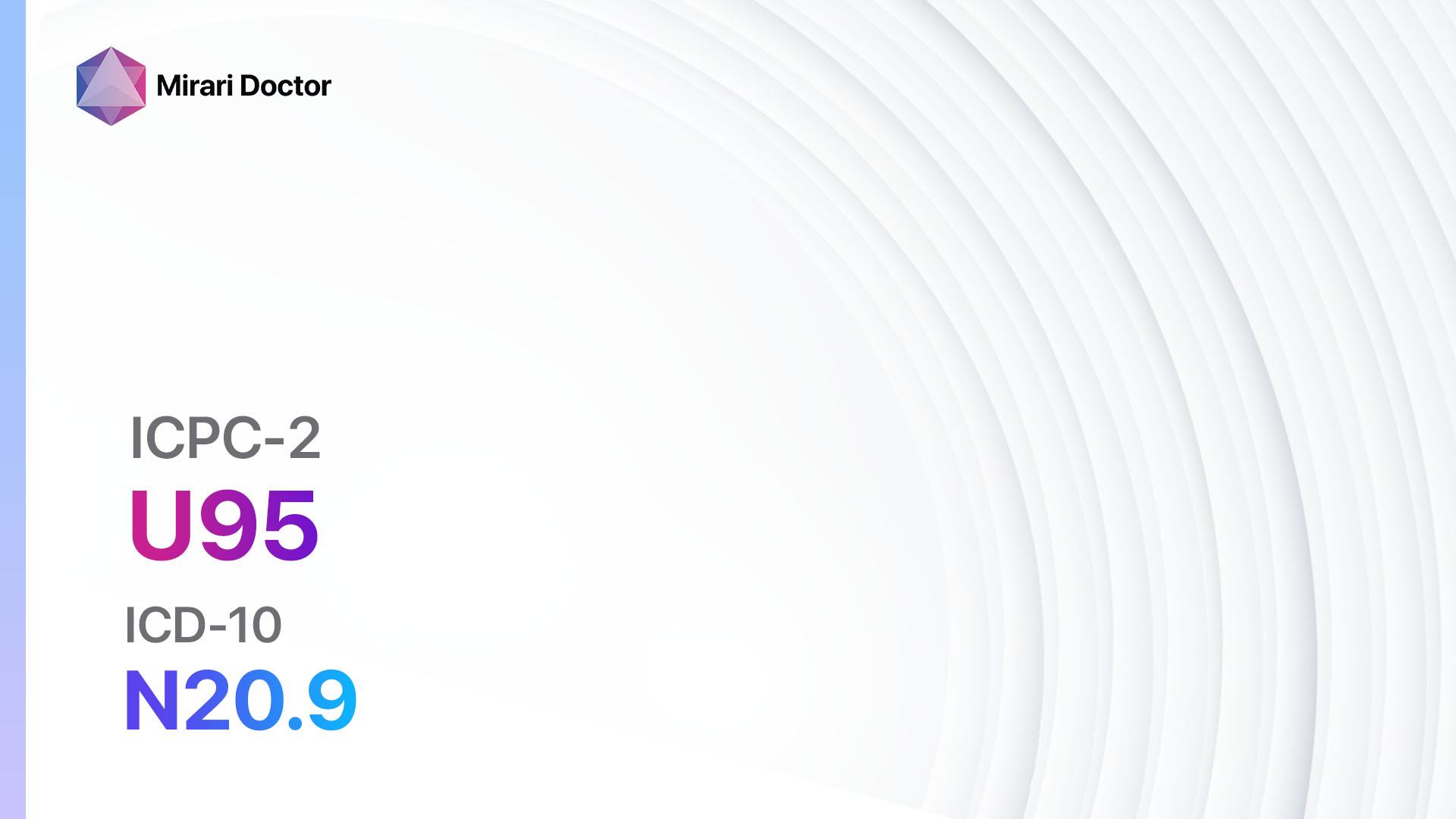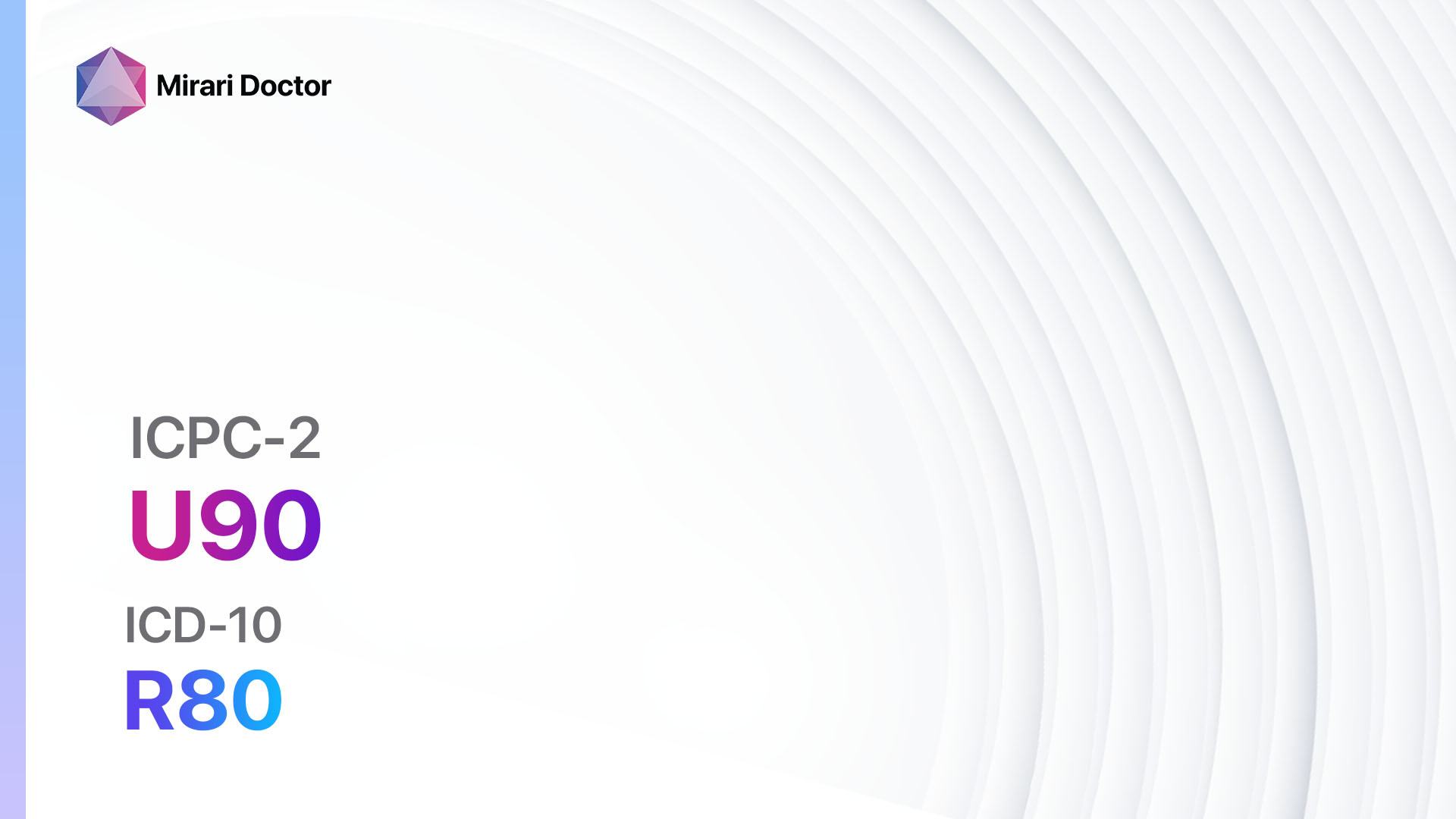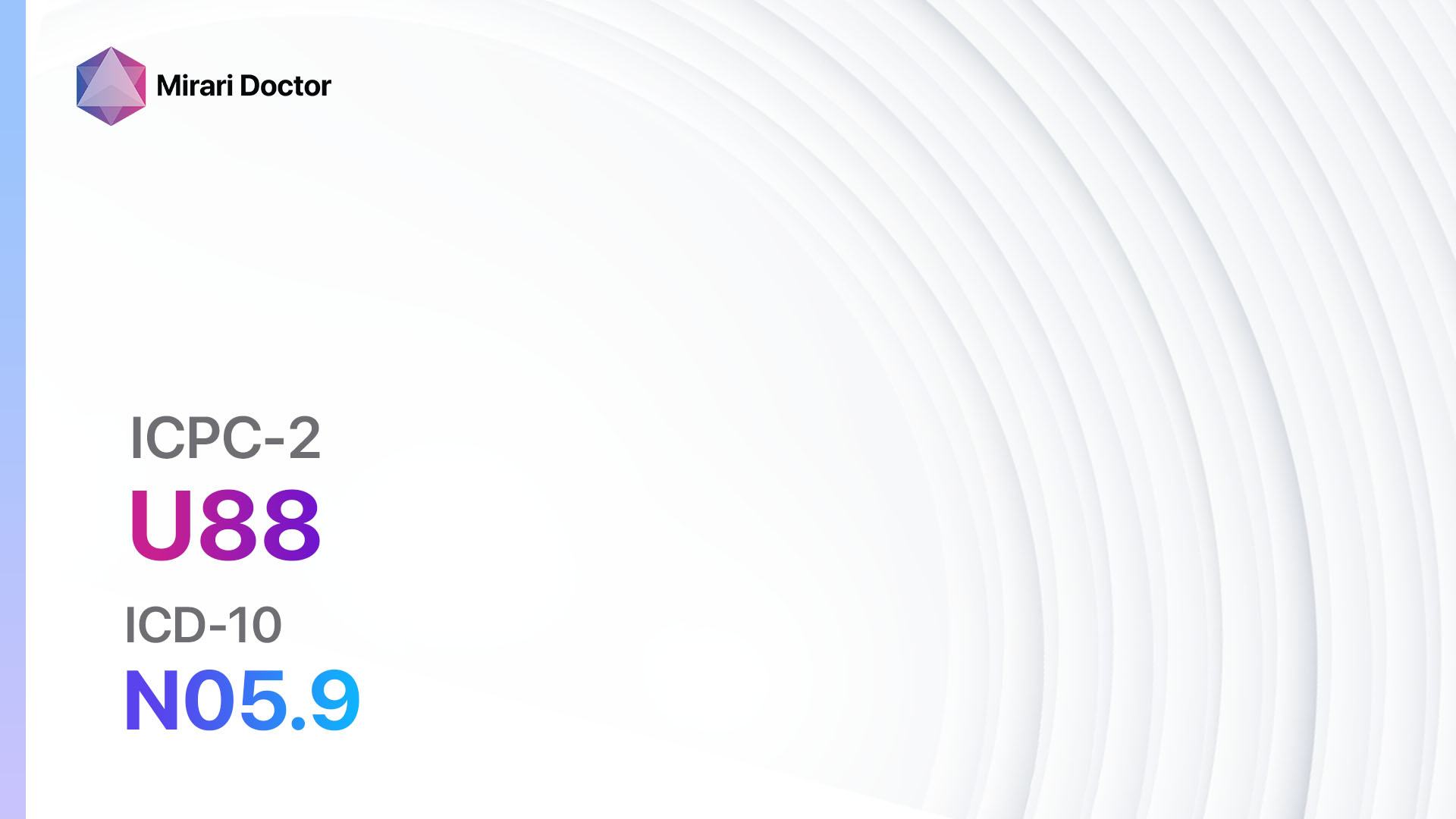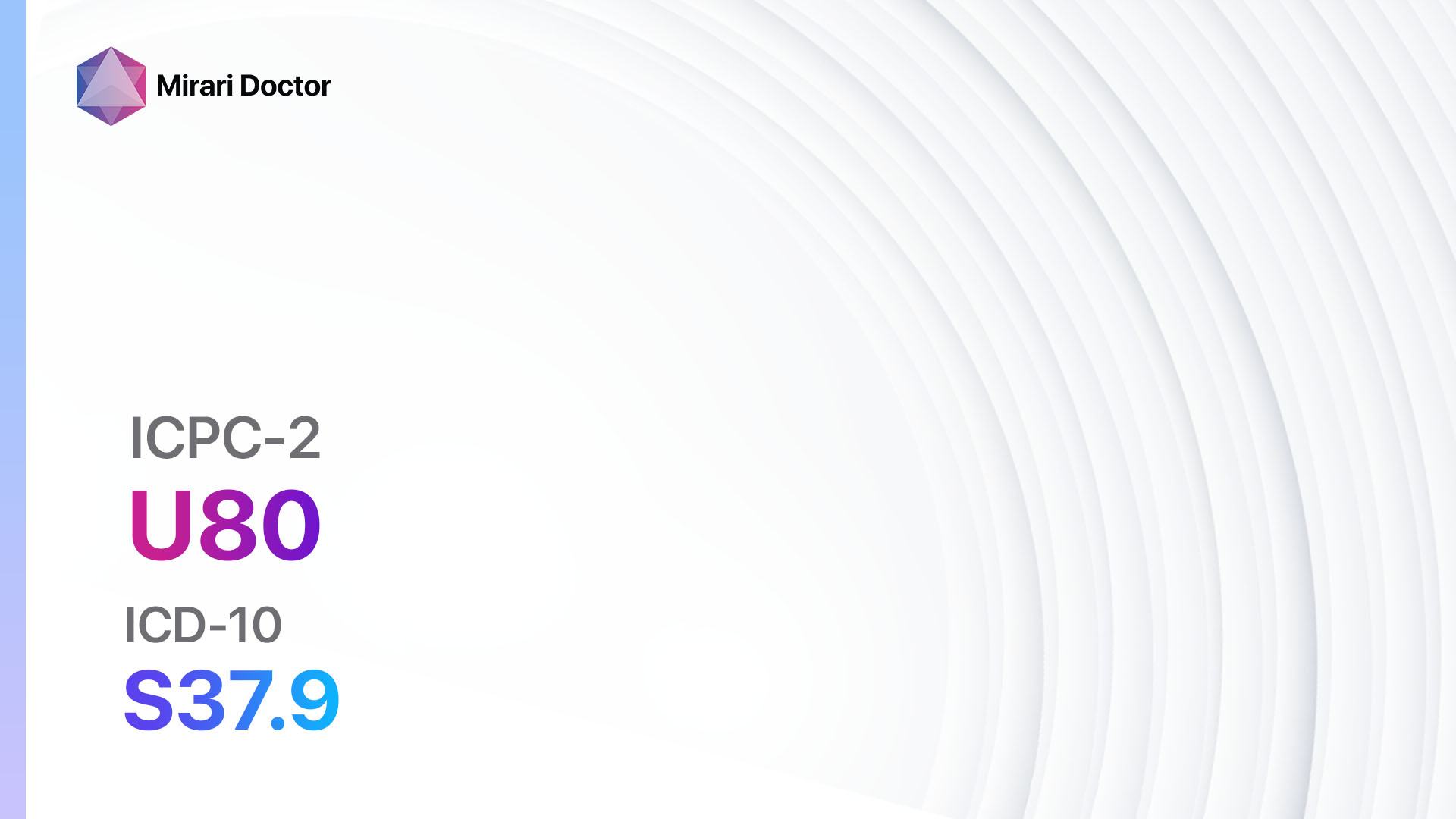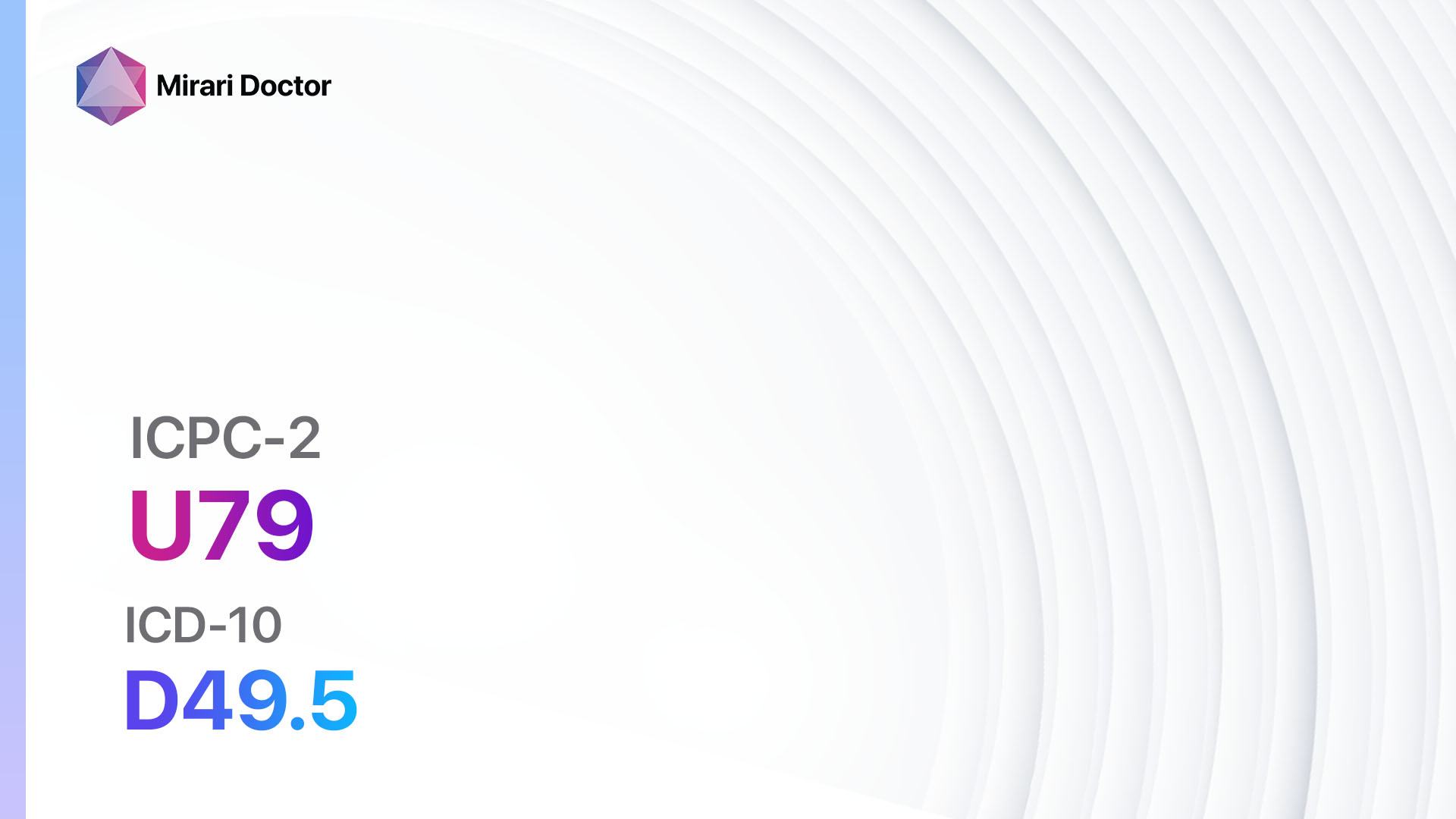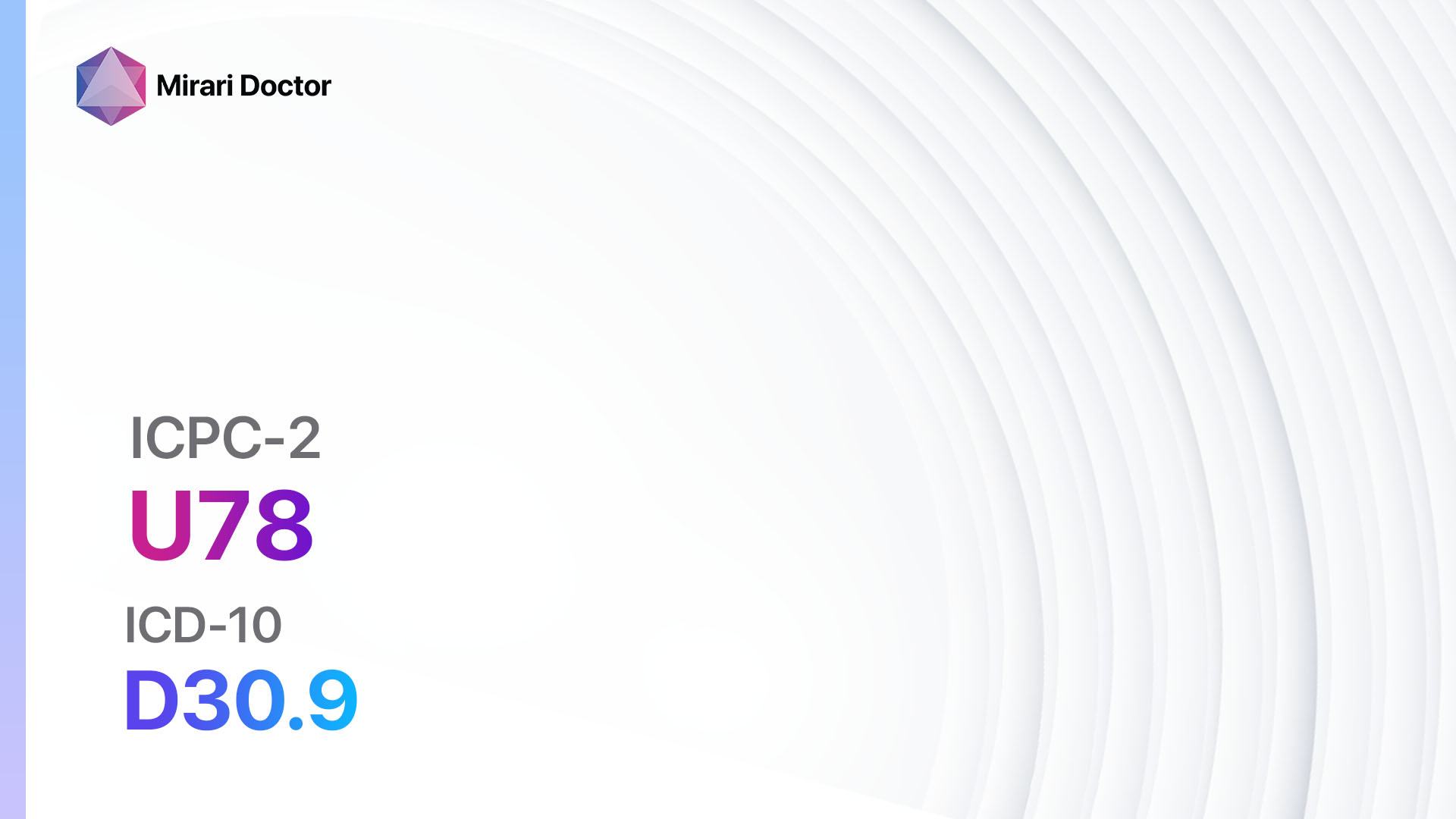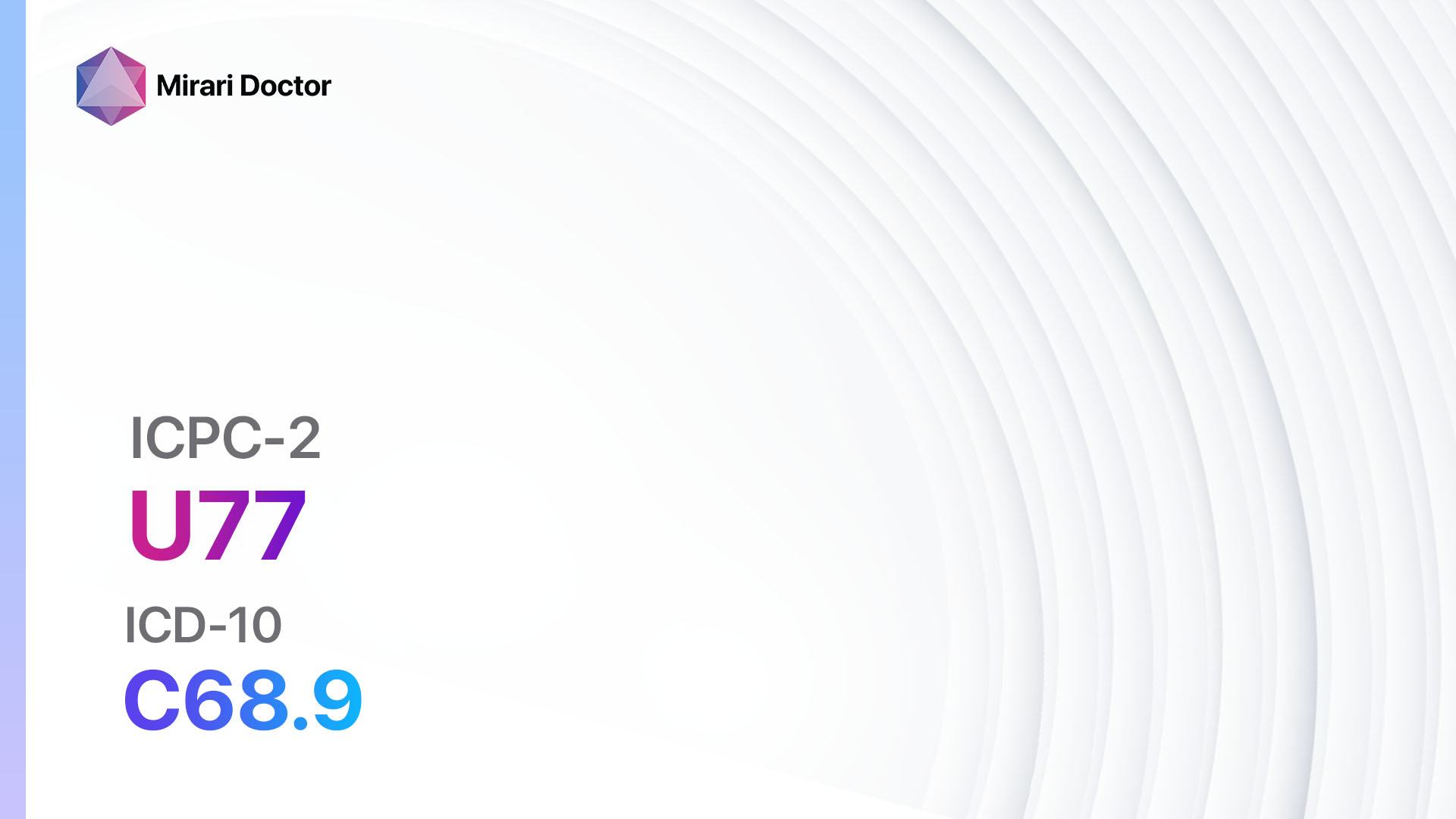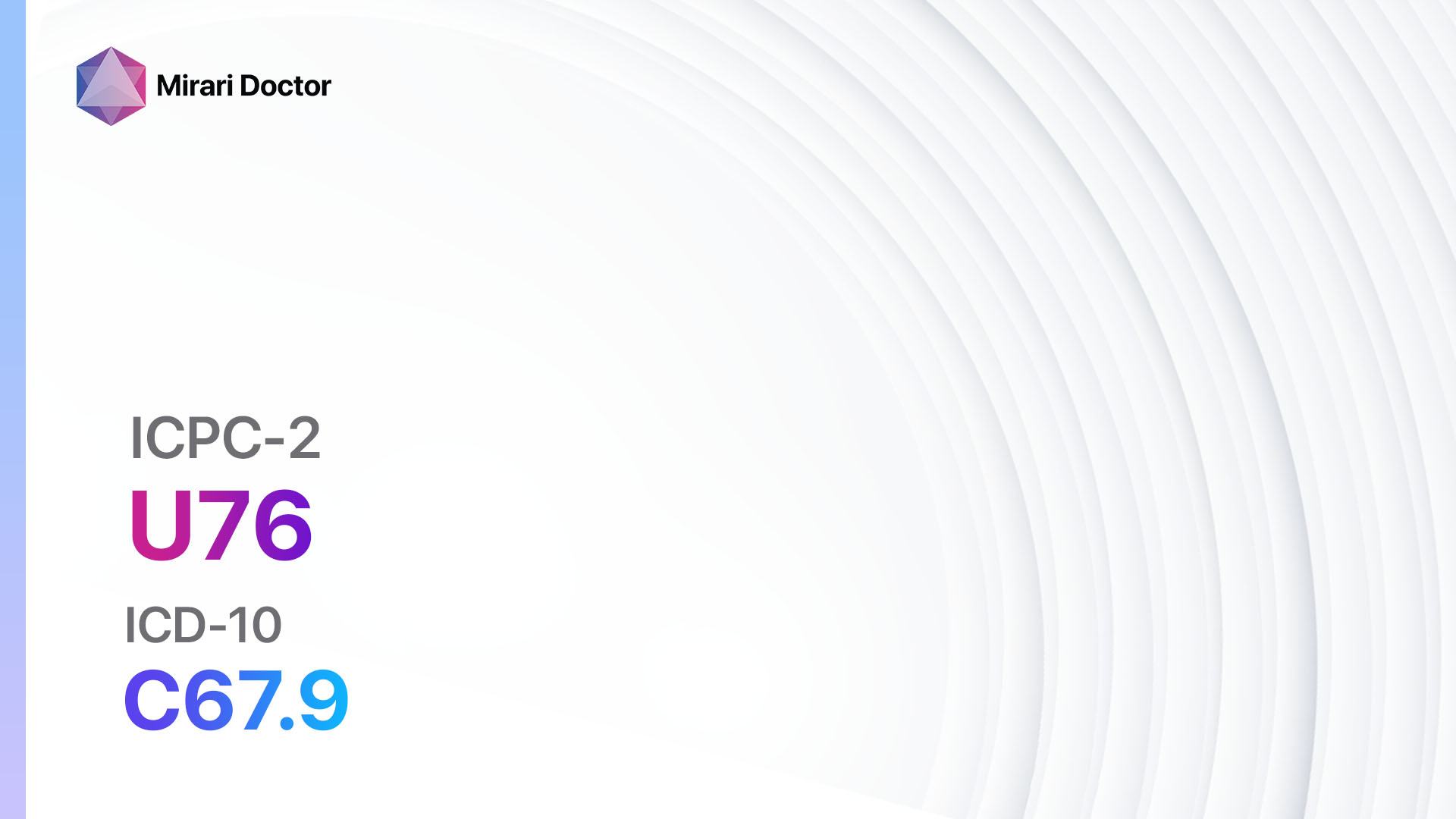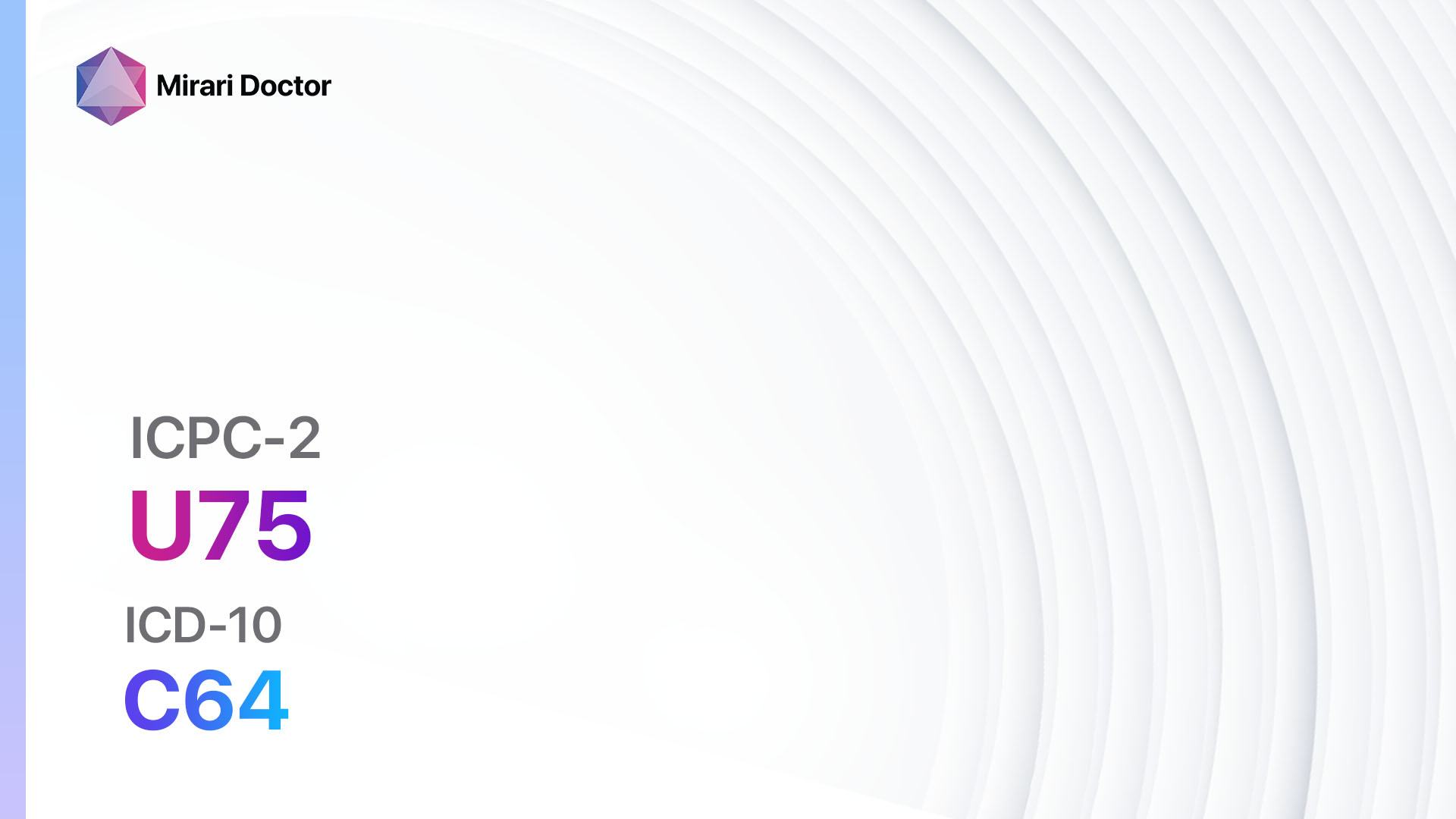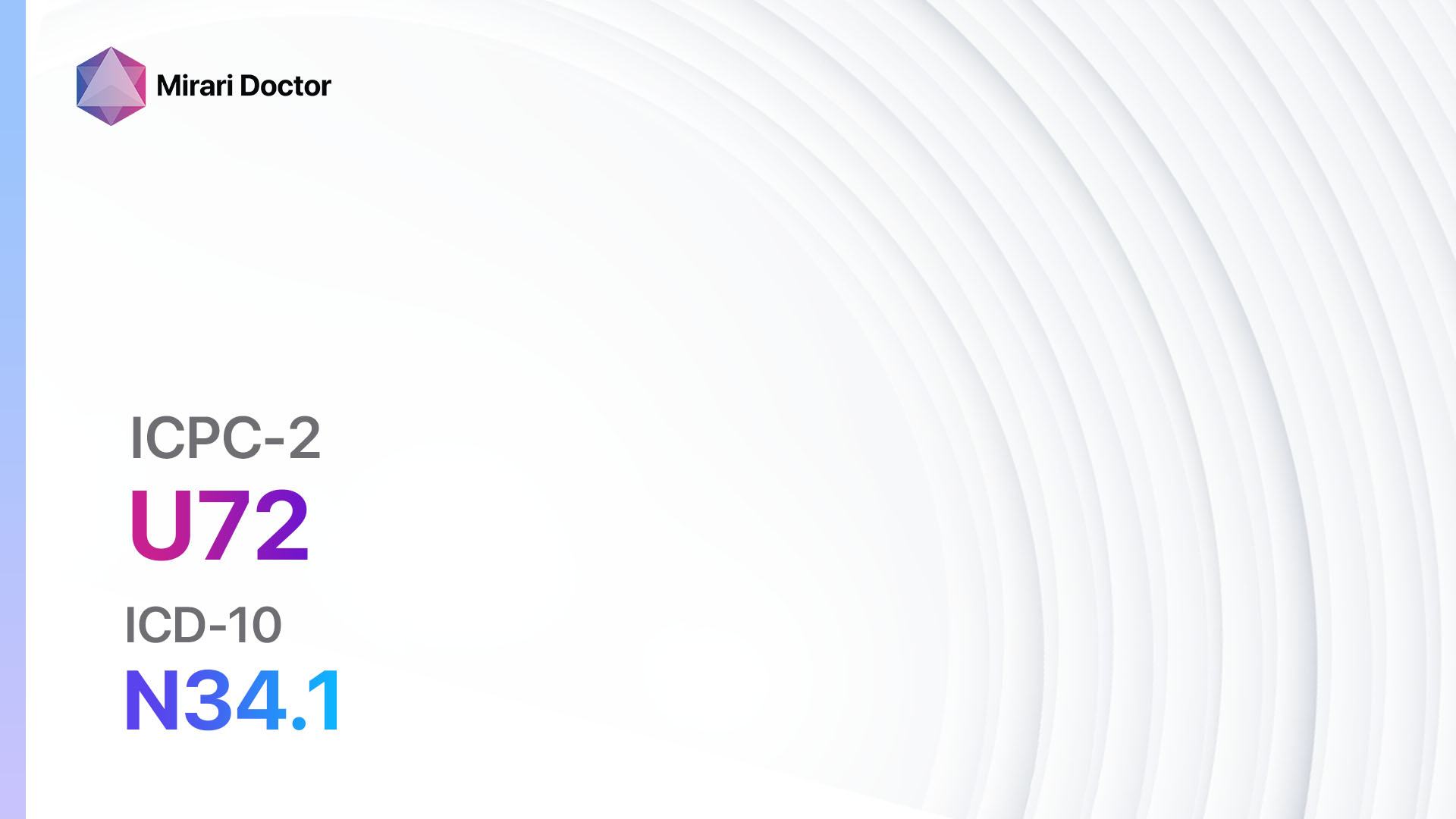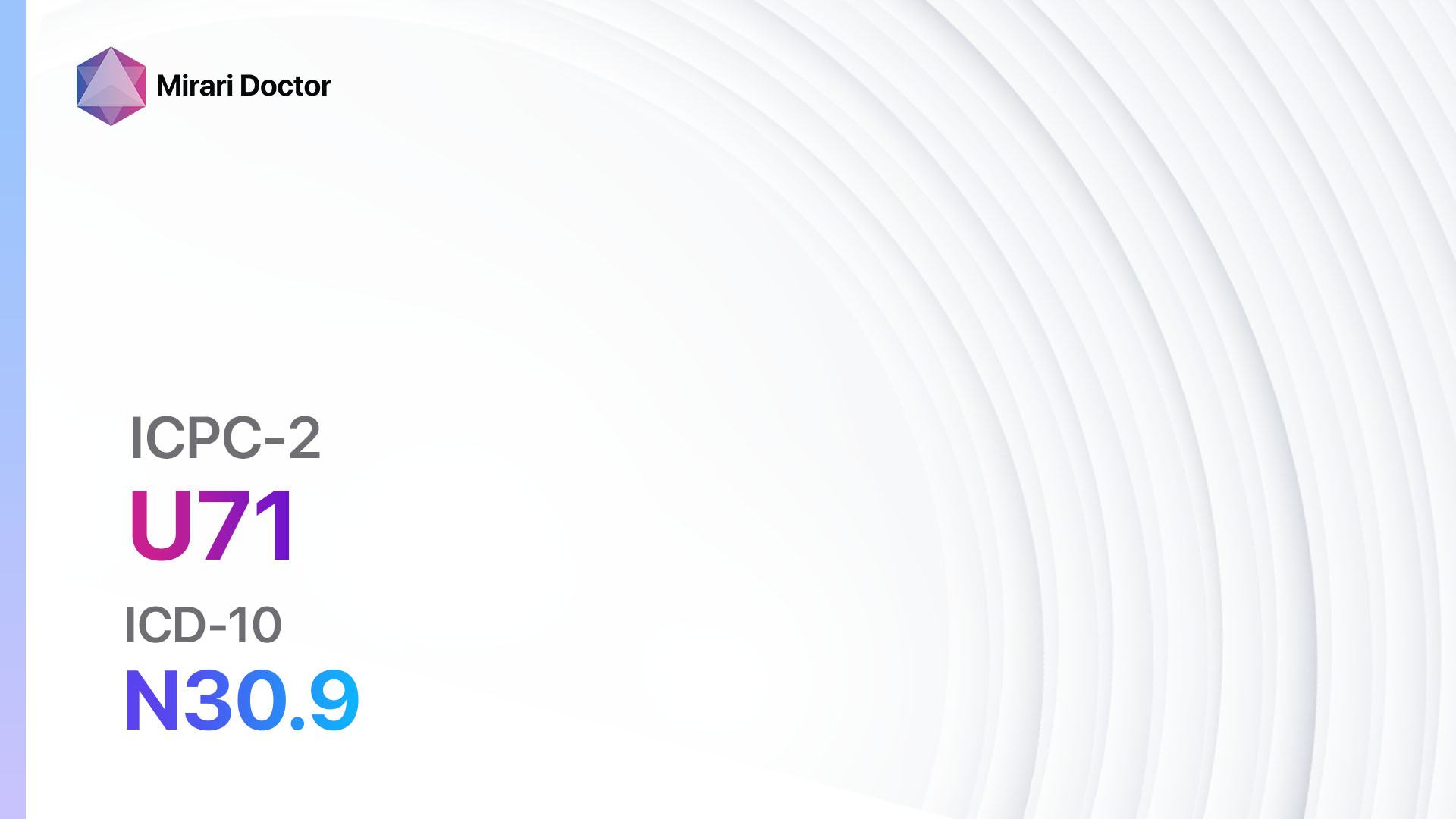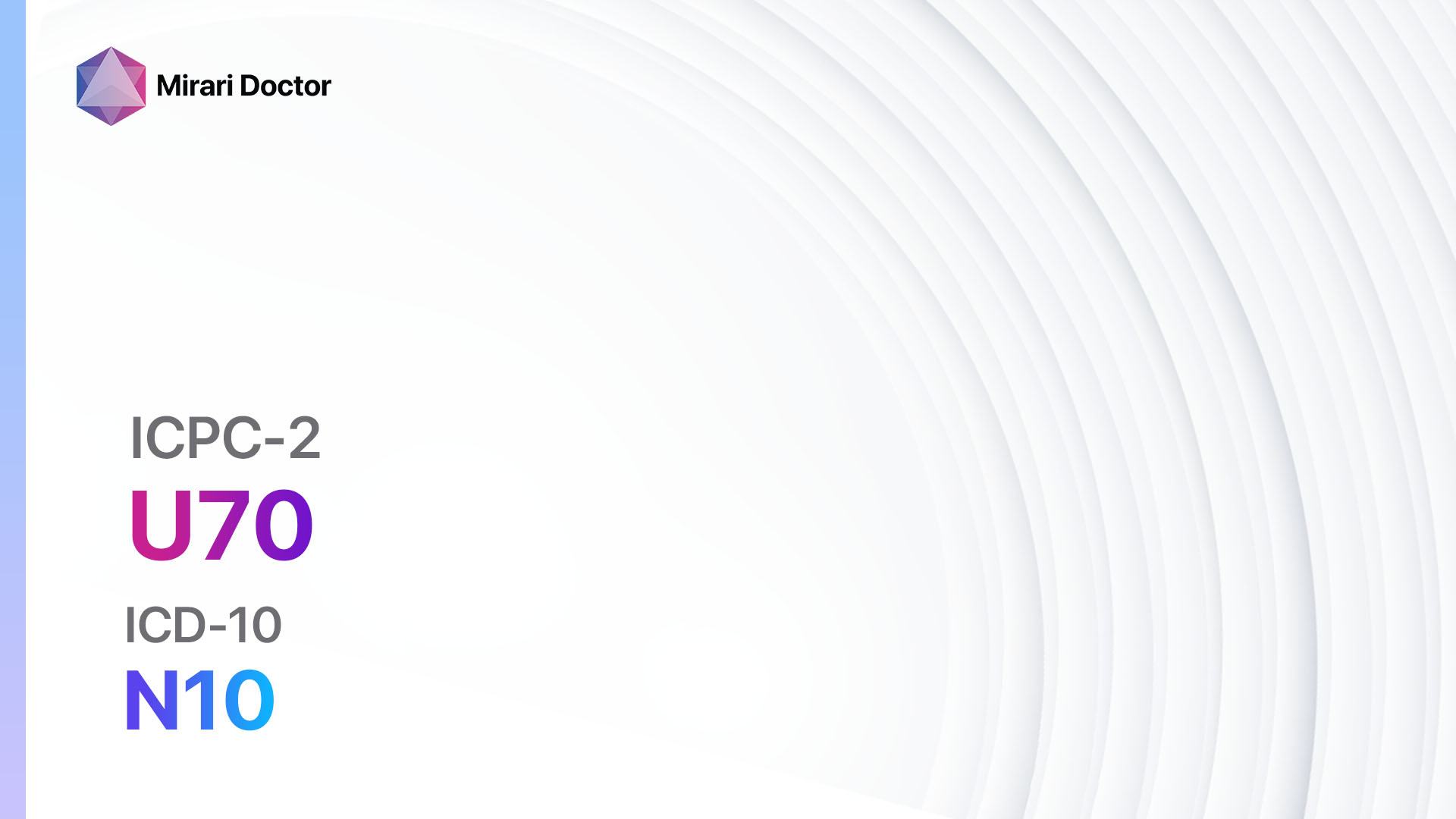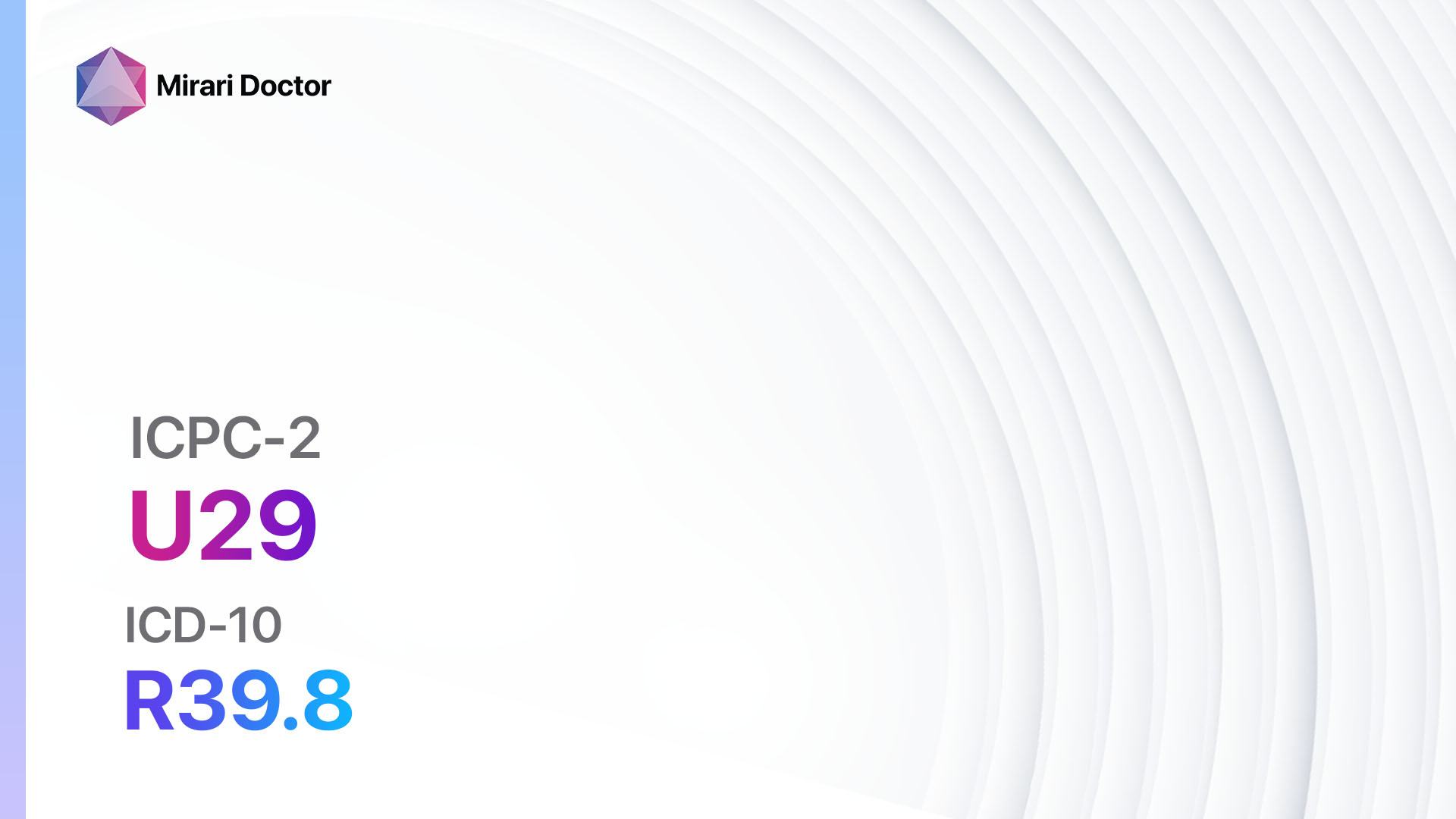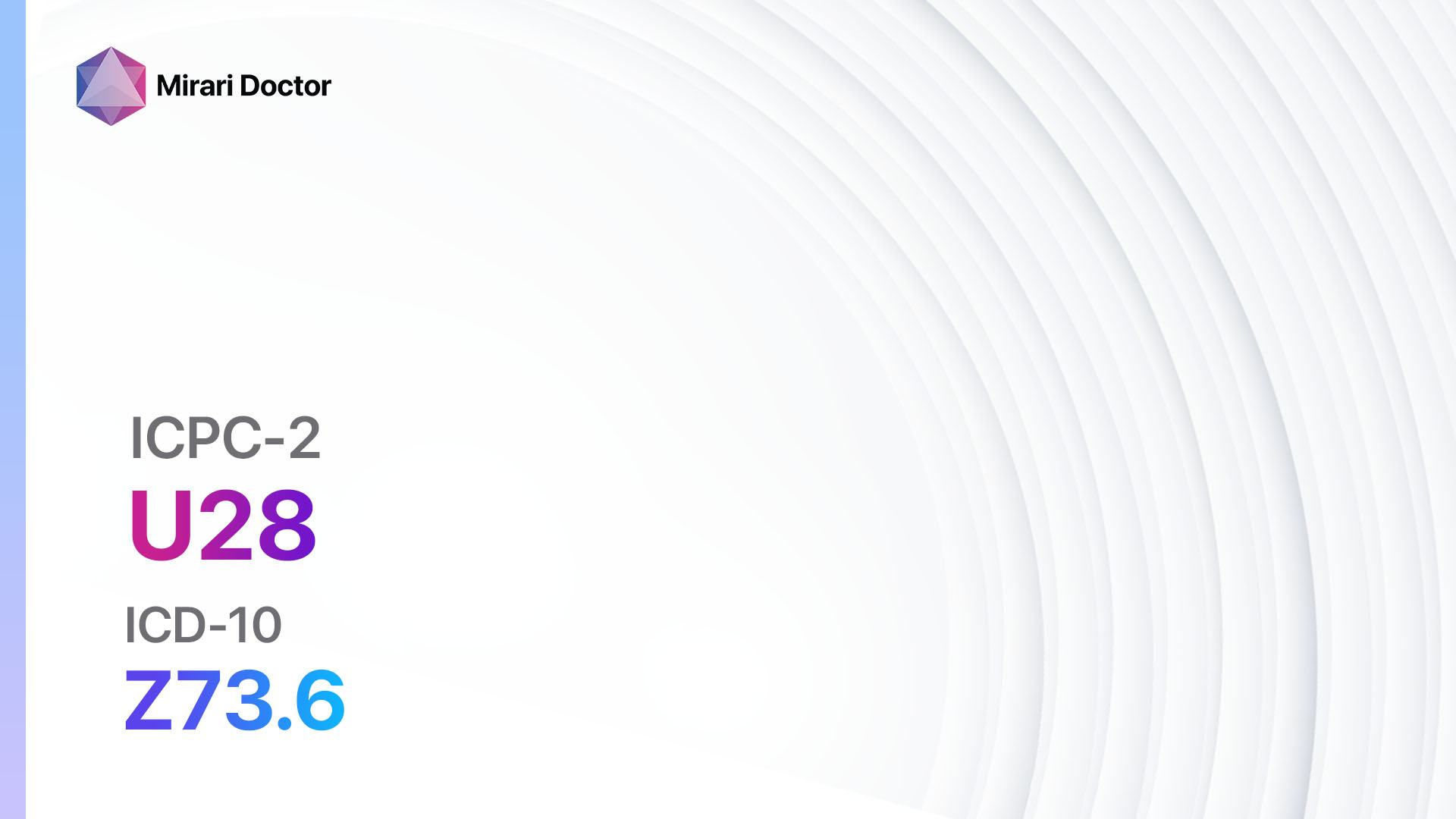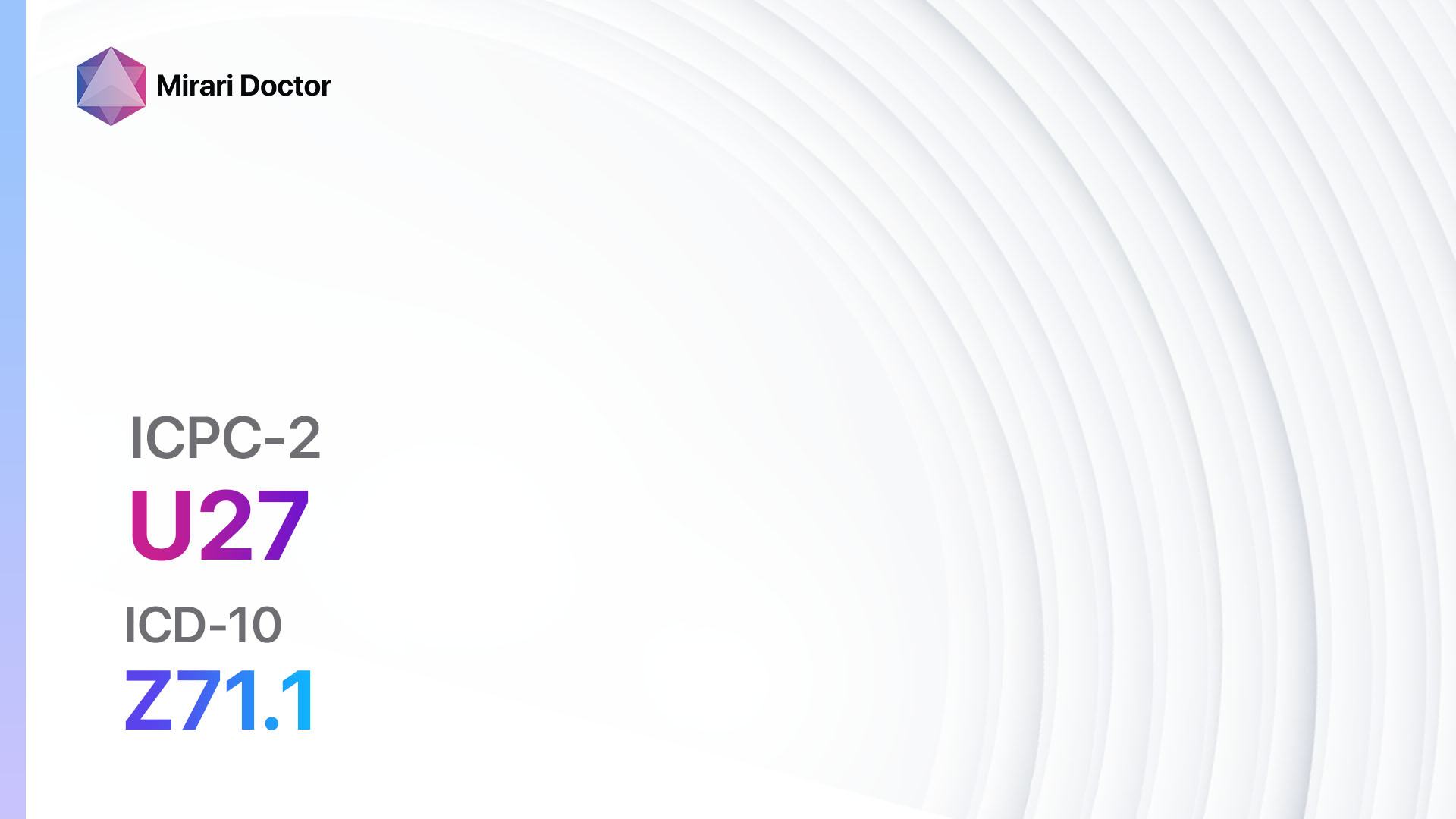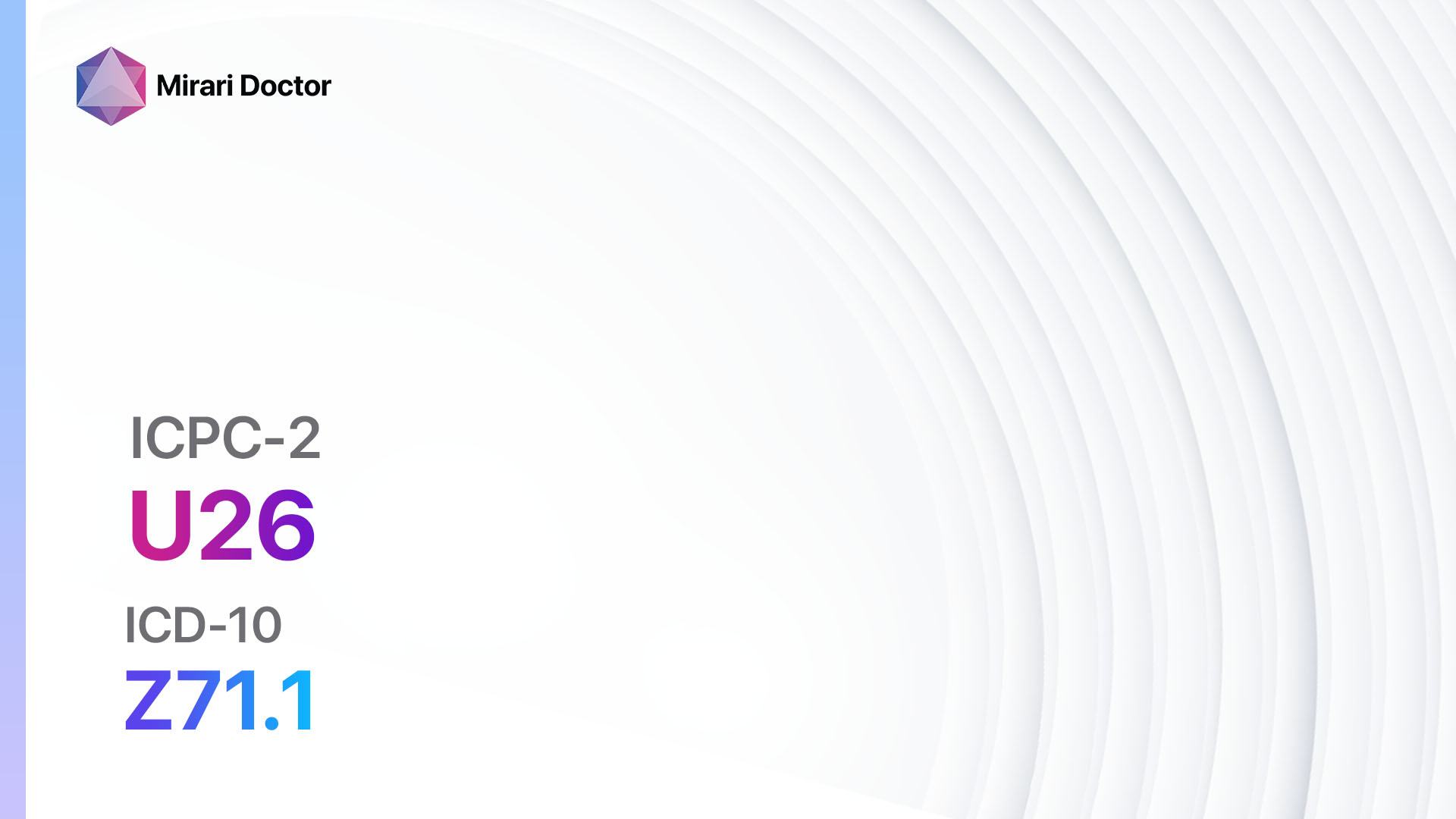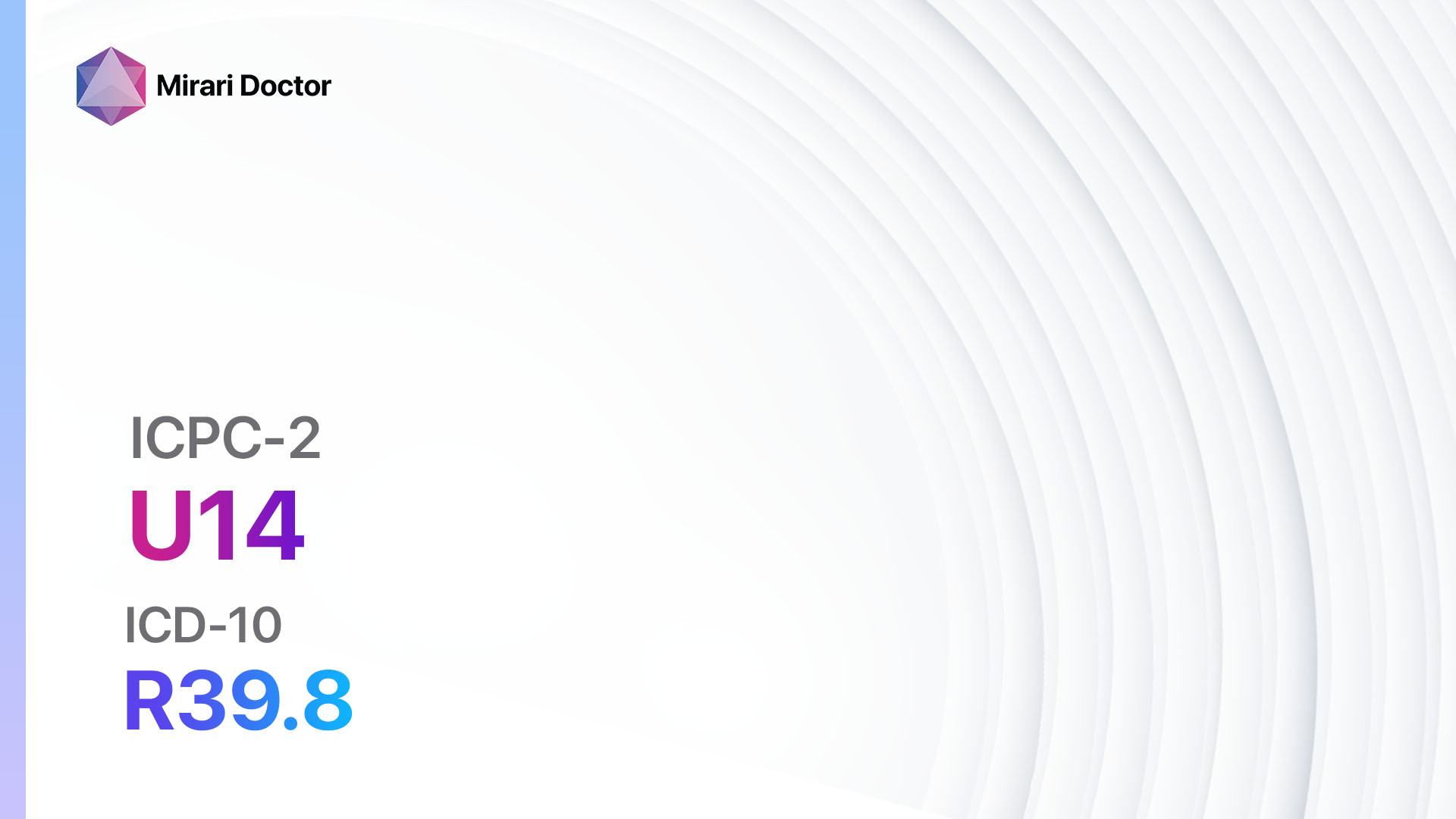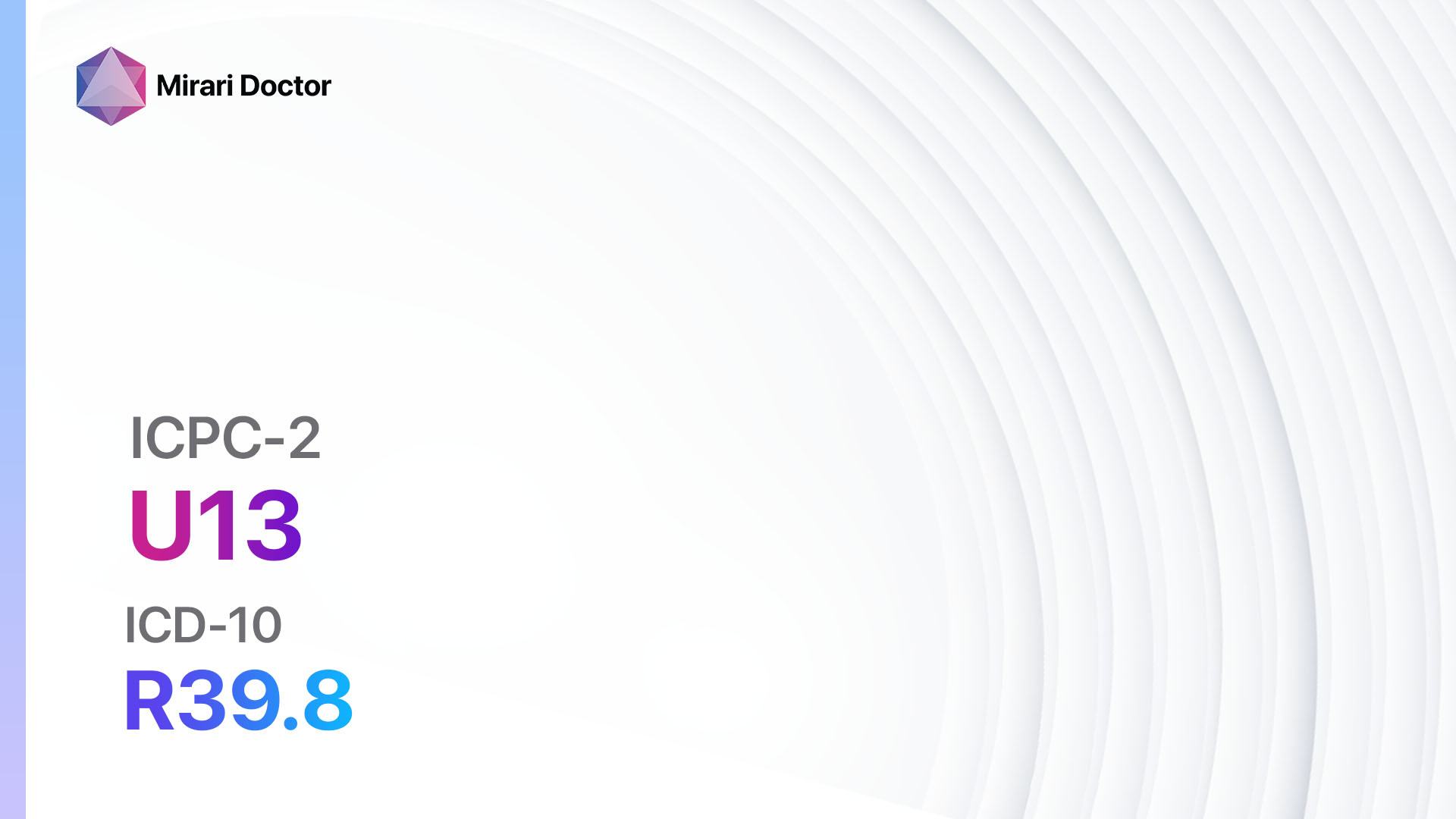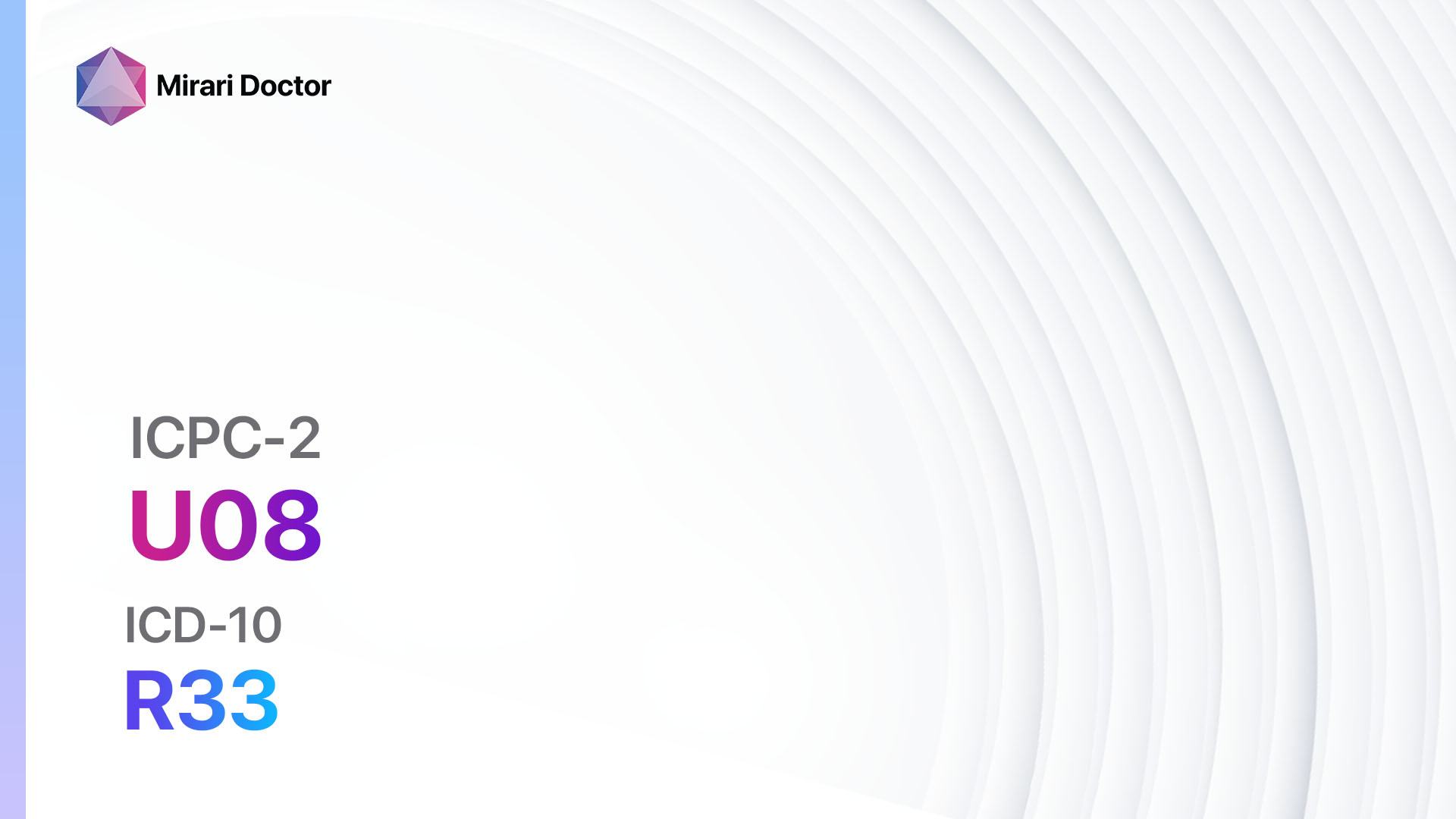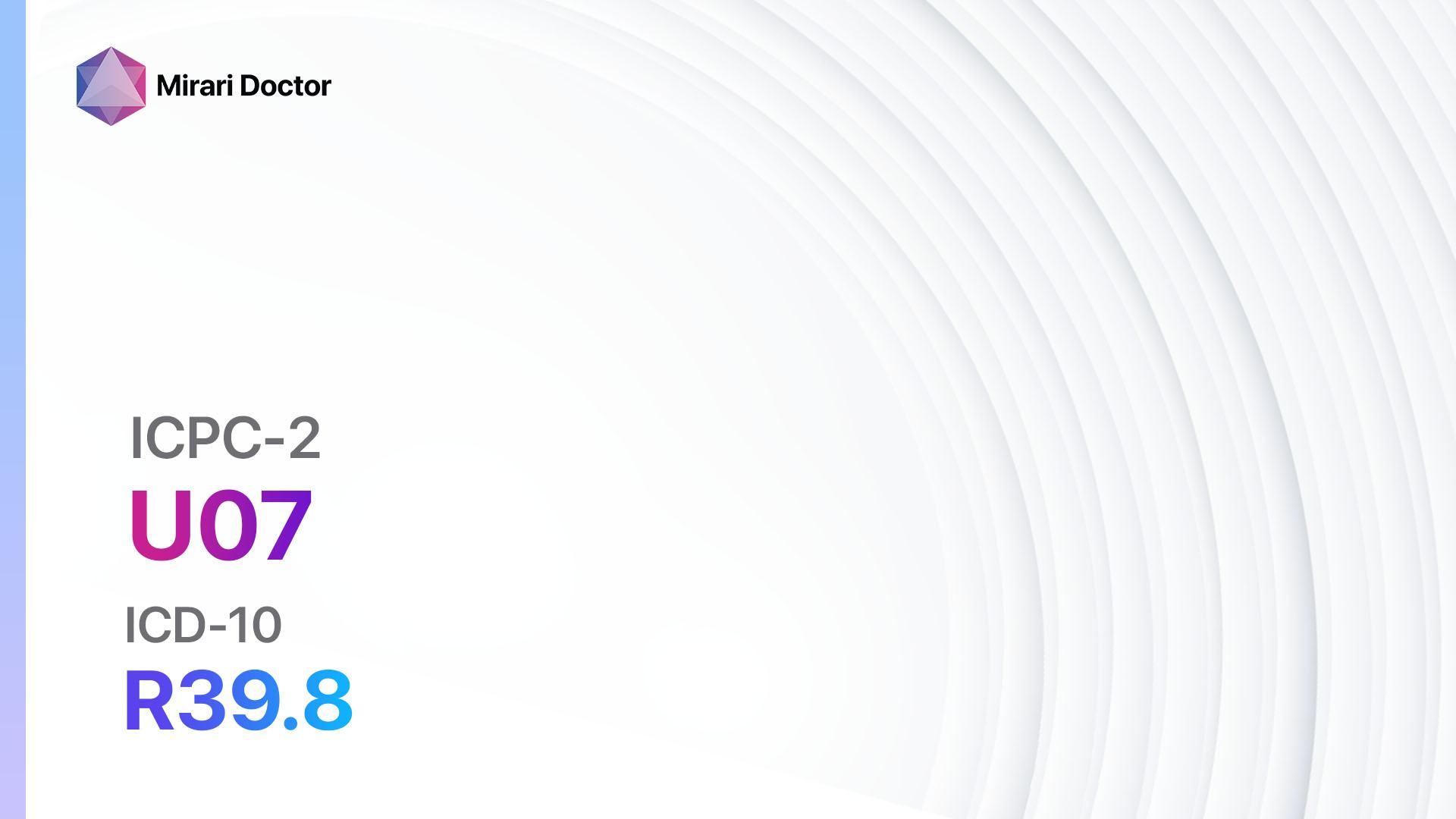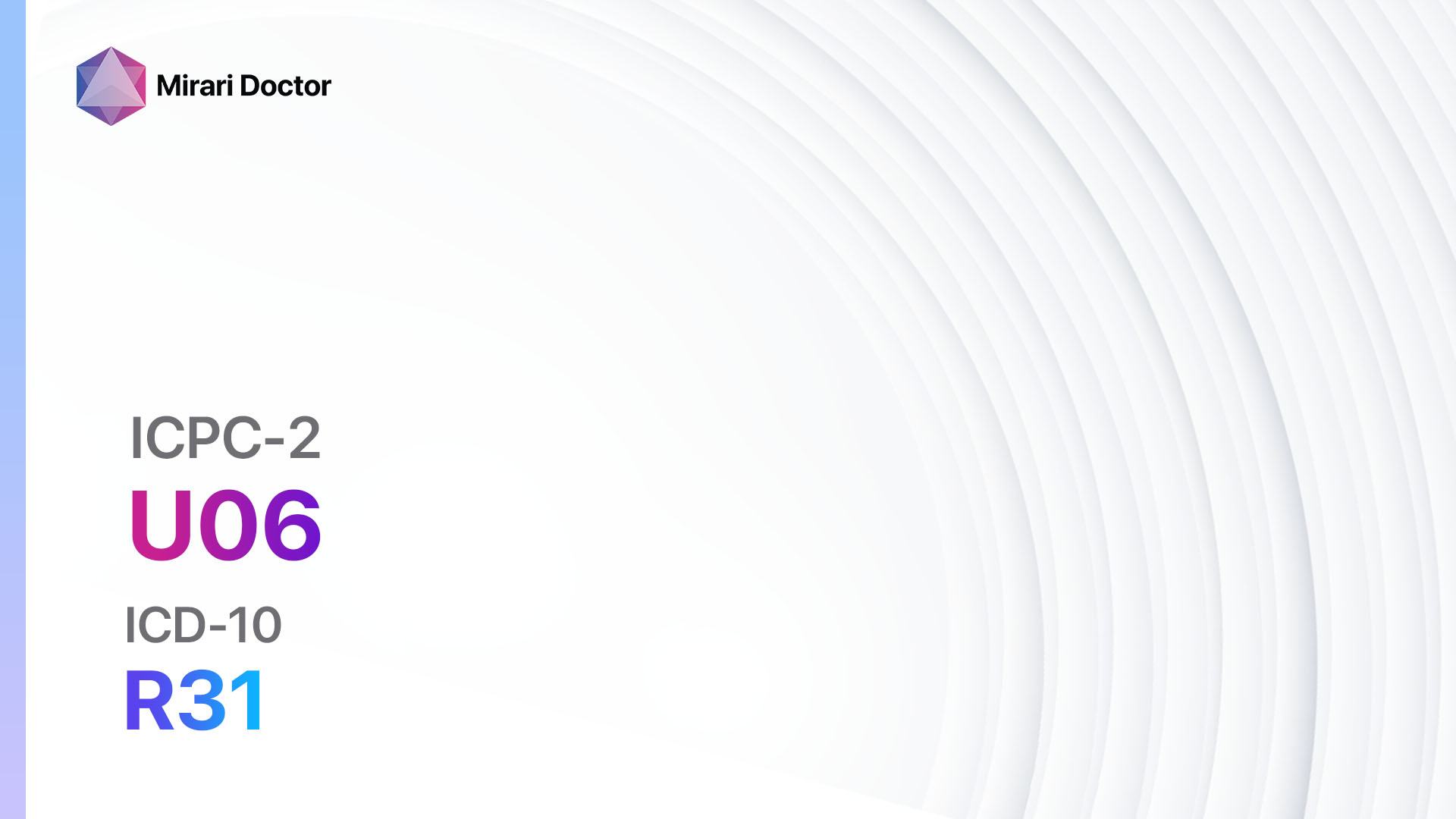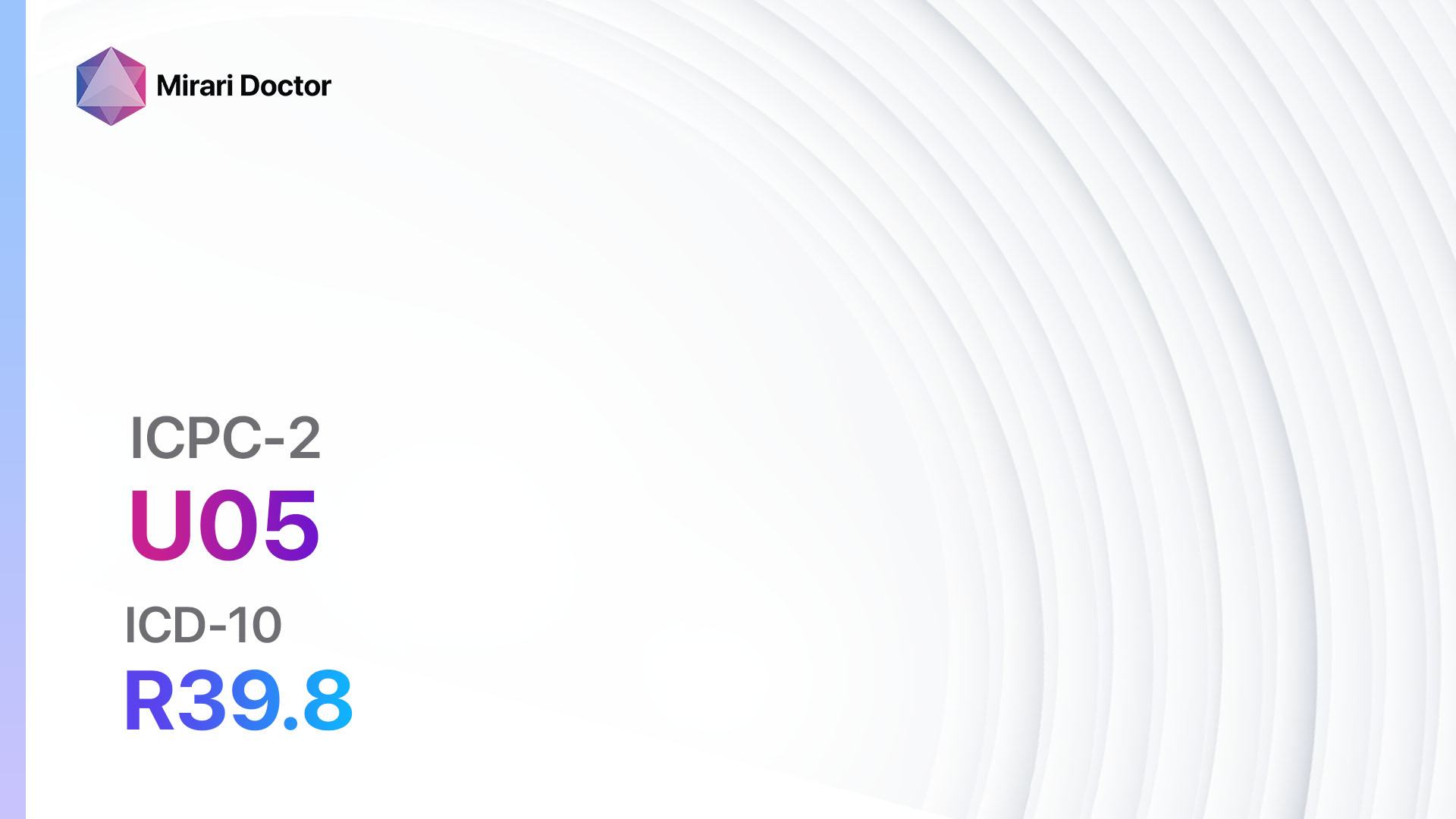
Introduction
Urination problems other (ICPC-2: U05) refers to a range of conditions that affect the normal process of urination. These conditions can cause various symptoms and can significantly impact a person’s quality of life[1]. The aim of this guide is to provide healthcare professionals with a comprehensive overview of the diagnostic steps and possible interventions for urination problems other.
Codes
- ICPC-2 Code: U05 Urination problems other
- ICD-10 Code: R39.8 Other specified symptoms and signs involving the urinary system[2]
Symptoms
- Frequent urination: The need to urinate more often than usual.
- Urgency: A sudden and intense need to urinate.
- Nocturia: Waking up during the night to urinate.
- Incontinence: Involuntary leakage of urine.
- Dysuria: Pain or discomfort during urination.
- Hematuria: Blood in the urine[3].
Causes
- Urinary tract infections (UTIs): Infections in the urinary tract, including the bladder, urethra, and kidneys.
- Bladder or kidney stones: Hard deposits that form in the bladder or kidneys.
- Enlarged prostate: Benign prostatic hyperplasia (BPH) can cause urinary symptoms in men.
- Neurological conditions: Conditions such as multiple sclerosis or spinal cord injuries can affect nerve signals to the bladder.
- Medications: Certain medications can cause urinary symptoms as a side effect.
- Bladder or prostate cancer: Tumors in the bladder or prostate can cause urinary symptoms[4].
Diagnostic Steps
Medical History
- Gather information about the patient’s symptoms, including the duration and severity.
- Ask about any previous urinary tract infections or kidney stones.
- Inquire about any underlying medical conditions, such as diabetes or neurological disorders.
- Determine if the patient is taking any medications that may contribute to urinary symptoms[5].
Physical Examination
- Perform a general physical examination to assess overall health.
- Conduct a focused examination of the abdomen and pelvic region.
- Check for any signs of infection, such as fever or tenderness in the lower abdomen.
- Assess the prostate gland in men for enlargement or abnormalities[6].
Laboratory Tests
- Urinalysis: Analyze a urine sample for the presence of infection, blood, or other abnormalities.
- Urine culture: Identify the specific bacteria causing a urinary tract infection.
- Blood tests: Measure kidney function and assess for any underlying medical conditions.
- Prostate-specific antigen (PSA) test: Screen for prostate cancer in men[7].
Diagnostic Imaging
- Ultrasound: Visualize the urinary tract to identify any structural abnormalities or stones.
- CT scan: Provide detailed images of the urinary tract to detect tumors, stones, or other abnormalities.
- Cystoscopy: Insert a thin tube with a camera into the urethra and bladder to directly visualize the urinary tract[8].
Other Tests
- Urodynamic testing: Measure bladder and urethral function to assess for any abnormalities in urine flow.
- Cystogram: X-ray imaging of the bladder during urination to evaluate bladder function.
- Electromyography (EMG): Assess the electrical activity of the muscles involved in urination[9].
Follow-up and Patient Education
- Schedule a follow-up appointment to discuss the results of diagnostic tests.
- Provide education on lifestyle modifications and interventions to manage urinary symptoms.
- Address any concerns or questions the patient may have regarding their condition[10].
Possible Interventions
Traditional Interventions
Medications:
Top 5 drugs for Urination problems other:
- Anticholinergic medications (e.g., Oxybutynin, Tolterodine):
- Cost: Generic versions can be $10-$50/month.
- Contraindications: Glaucoma, urinary retention, gastrointestinal obstruction.
- Side effects: Dry mouth, constipation, blurred vision.
- Severe side effects: Urinary retention, confusion, hallucinations.
- Drug interactions: Other anticholinergic medications.
- Warning: Use with caution in elderly patients.
- Alpha-blockers (e.g., Tamsulosin, Alfuzosin):
- Cost: Generic versions can be $10-$50/month.
- Contraindications: Severe liver or kidney disease, hypotension.
- Side effects: Dizziness, headache, nasal congestion.
- Severe side effects: Orthostatic hypotension, priapism.
- Drug interactions: Other alpha-blockers, nitrates.
- Warning: Take medication at bedtime to minimize dizziness.
- 5-alpha reductase inhibitors (e.g., Finasteride, Dutasteride):
- Cost: Generic versions can be $10-$50/month.
- Contraindications: Pregnancy, liver disease.
- Side effects: Decreased libido, erectile dysfunction.
- Severe side effects: Allergic reactions, breast tenderness.
- Drug interactions: None significant.
- Warning: May take several months to see the full effect.
- Antibiotics (e.g., Ciprofloxacin, Nitrofurantoin):
- Cost: Generic versions can be $10-$50/month.
- Contraindications: Allergy to the specific antibiotic.
- Side effects: Nausea, diarrhea, rash.
- Severe side effects: Severe allergic reactions, tendon rupture.
- Drug interactions: Other medications that interact with specific antibiotics.
- Warning: Complete the full course of antibiotics as prescribed.
- Hormone therapy (e.g., Estrogen, Testosterone):
- Cost: Varies depending on the specific hormone and formulation.
- Contraindications: History of hormone-sensitive cancer, blood clots.
- Side effects: Nausea, breast tenderness, mood changes.
- Severe side effects: Increased risk of certain cancers, cardiovascular events.
- Drug interactions: Other medications that interact with specific hormones.
- Warning: Discuss the risks and benefits with the patient before initiating hormone therapy.
Alternative Drugs:
- Phytotherapy (e.g., Saw palmetto, Pumpkin seed extract): Herbal supplements that may help improve urinary symptoms. Cost: Varies depending on the specific supplement.
- Beta-3 adrenergic agonists (e.g., Mirabegron): Stimulate the relaxation of the bladder muscle. Cost: $100-$200/month.
- Desmopressin: A synthetic hormone that reduces urine production. Cost: $50-$100/month.
- Muscle relaxants (e.g., Baclofen, Diazepam): Help relax the muscles of the bladder. Cost: Varies depending on the specific medication.
Surgical Procedures:
- Transurethral resection of the prostate (TURP): Remove excess prostate tissue to relieve urinary symptoms in men with BPH. Cost: $10,000 to $20,000.
- Bladder augmentation: Increase the capacity of the bladder to reduce urinary frequency and urgency. Cost: $20,000 to $40,000.
- Urinary diversion: Create a new way for urine to leave the body when the bladder is not functioning properly. Cost: $50,000 to $100,000.
Alternative Interventions
- Acupuncture: May help improve urinary symptoms. Cost: $60-$120 per session.
- Pelvic floor exercises: Strengthening the pelvic floor muscles can help improve bladder control. Cost: Free.
- Biofeedback: Teaches patients how to control their pelvic floor muscles using visual or auditory feedback. Cost: $100-$200 per session.
- Herbal supplements: Some herbs, such as cranberry or uva ursi, may have potential benefits for urinary tract health. Cost: Varies depending on the specific supplement.
- Bladder training: A behavioral therapy that helps patients gradually increase the time between urinations. Cost: Free.
Lifestyle Interventions
- Fluid management: Limiting fluid intake, especially before bedtime, can help reduce nocturia. Cost: Free.
- Dietary modifications: Avoiding bladder irritants, such as caffeine and alcohol, may help improve urinary symptoms. Cost: Varies depending on dietary choices.
- Weight management: Losing weight can alleviate pressure on the bladder and improve urinary symptoms. Cost: Varies depending on weight loss methods.
- Scheduled voiding: Establishing a regular urination schedule can help manage urinary frequency and urgency. Cost: Free.
- Stress management: Stress can exacerbate urinary symptoms, so implementing stress-reduction techniques may be beneficial. Cost: Varies depending on chosen stress management methods.
It is important to note that the cost ranges provided are approximate and may vary depending on the location and availability of the interventions.
Mirari Cold Plasma Alternative Intervention
Understanding Mirari Cold Plasma
- Safe and Non-Invasive Treatment: Mirari Cold Plasma is a safe and non-invasive treatment option for various skin conditions. It does not require incisions, minimizing the risk of scarring, bleeding, or tissue damage.
- Efficient Extraction of Foreign Bodies: Mirari Cold Plasma facilitates the removal of foreign bodies from the skin by degrading and dissociating organic matter, allowing easier access and extraction.
- Pain Reduction and Comfort: Mirari Cold Plasma has a local analgesic effect, providing pain relief during the treatment, making it more comfortable for the patient.
- Reduced Risk of Infection: Mirari Cold Plasma has antimicrobial properties, effectively killing bacteria and reducing the risk of infection.
- Accelerated Healing and Minimal Scarring: Mirari Cold Plasma stimulates wound healing and tissue regeneration, reducing healing time and minimizing the formation of scars.
Mirari Cold Plasma Prescription
Video instructions for using Mirari Cold Plasma Device – U05 Urination problems other (ICD-10:R39.8)
| Mild | Moderate | Severe |
| Mode setting: 1 (Infection) Location: 2 (Prostate & Uterus) Morning: 15 minutes, Evening: 15 minutes |
Mode setting: 1 (Infection) Location: 2 (Prostate & Uterus) Morning: 30 minutes, Lunch: 30 minutes, Evening: 30 minutes |
Mode setting: 1 (Infection) Location: 2 (Prostate & Uterus) Morning: 30 minutes, Lunch: 30 minutes, Evening: 30 minutes |
| Mode setting: 6 (Liver/Kidney Therapy) Location: 2 (Prostate & Uterus) Morning: 15 minutes, Evening: 15 minutes |
Mode setting: 6 (Liver/Kidney Therapy) Location: 2 (Prostate & Uterus) Morning: 30 minutes, Lunch: 30 minutes, Evening: 30 minutes |
Mode setting: 6 (Liver/Kidney Therapy) Location: 2 (Prostate & Uterus) Morning: 30 minutes, Lunch: 30 minutes, Evening: 30 minutes |
| Mode setting: 6 (Liver/Kidney Therapy) Location: 3 (Kidney, Liver & Spleen) Morning: 15 minutes, Evening: 15 minutes |
Mode setting: 6 (Liver/Kidney Therapy) Location: 3 (Kidney, Liver & Spleen) Morning: 30 minutes, Lunch: 30 minutes, Evening: 30 minutes |
Mode setting: 6 (Liver/Kidney Therapy) Location: 3 (Kidney, Liver & Spleen) Morning: 30 minutes, Lunch: 30 minutes, Evening: 30 minutes |
| Mode setting: 7 (Immunotherapy) Location: 1 (Sacrum) Morning: 15 minutes, Evening: 15 minutes |
Mode setting:7 (Immunotherapy) Location: 1 (Sacrum) Morning: 30 minutes, Lunch: 30 minutes, Evening: 30 minutes |
Mode setting:7 (Immunotherapy) Location: 1 (Sacrum) Morning: 30 minutes, Lunch: 30 minutes, Evening: 30 minutes |
| Total Morning: 60 minutes approx. $10 USD, Evening: 60 minutes approx. $10 USD |
Total Morning: 120 minutes approx. $20 USD, Lunch: 120 minutes approx. $20 USD, Evening: 120 minutes approx. $20 USD, |
Total Morning: 120 minutes approx. $20 USD, Lunch: 120 minutes approx. $20 USD, Evening: 120 minutes approx. $20 USD, |
| Usual treatment for 7-60 days approx. $140 USD – $1200 USD | Usual treatment for 6-8 weeks approx. $2,520 USD – $3,360 USD |
Usual treatment for 3-6 months approx. $5,400 USD – $10,800 USD
|
 |
|
Use the Mirari Cold Plasma device to treat Urination problems other effectively.
WARNING: MIRARI COLD PLASMA IS DESIGNED FOR THE HUMAN BODY WITHOUT ANY ARTIFICIAL OR THIRD PARTY PRODUCTS. USE OF OTHER PRODUCTS IN COMBINATION WITH MIRARI COLD PLASMA MAY CAUSE UNPREDICTABLE EFFECTS, HARM OR INJURY. PLEASE CONSULT A MEDICAL PROFESSIONAL BEFORE COMBINING ANY OTHER PRODUCTS WITH USE OF MIRARI.
Step 1: Cleanse the Skin
- Start by cleaning the affected area of the skin with a gentle cleanser or mild soap and water. Gently pat the area dry with a clean towel.
Step 2: Prepare the Mirari Cold Plasma device
- Ensure that the Mirari Cold Plasma device is fully charged or has fresh batteries as per the manufacturer’s instructions. Make sure the device is clean and in good working condition.
- Switch on the Mirari device using the power button or by following the specific instructions provided with the device.
- Some Mirari devices may have adjustable settings for intensity or treatment duration. Follow the manufacturer’s instructions to select the appropriate settings based on your needs and the recommended guidelines.
Step 3: Apply the Device
- Place the Mirari device in direct contact with the affected area of the skin. Gently glide or hold the device over the skin surface, ensuring even coverage of the area experiencing.
- Slowly move the Mirari device in a circular motion or follow a specific pattern as indicated in the user manual. This helps ensure thorough treatment coverage.
Step 4: Monitor and Assess:
- Keep track of your progress and evaluate the effectiveness of the Mirari device in managing your Urination problems other. If you have any concerns or notice any adverse reactions, consult with your health care professional.
Note
This guide is for informational purposes only and should not replace the advice of a medical professional. Always consult with your healthcare provider or a qualified medical professional for personal advice, diagnosis, or treatment. Do not solely rely on the information presented here for decisions about your health. Use of this information is at your own risk. The authors of this guide, nor any associated entities or platforms, are not responsible for any potential adverse effects or outcomes based on the content.
Mirari Cold Plasma System Disclaimer
- Purpose: The Mirari Cold Plasma System is a Class 2 medical device designed for use by trained healthcare professionals. It is registered for use in Thailand and Vietnam. It is not intended for use outside of these locations.
- Informational Use: The content and information provided with the device are for educational and informational purposes only. They are not a substitute for professional medical advice or care.
- Variable Outcomes: While the device is approved for specific uses, individual outcomes can differ. We do not assert or guarantee specific medical outcomes.
- Consultation: Prior to utilizing the device or making decisions based on its content, it is essential to consult with a Certified Mirari Tele-Therapist and your medical healthcare provider regarding specific protocols.
- Liability: By using this device, users are acknowledging and accepting all potential risks. Neither the manufacturer nor the distributor will be held accountable for any adverse reactions, injuries, or damages stemming from its use.
- Geographical Availability: This device has received approval for designated purposes by the Thai and Vietnam FDA. As of now, outside of Thailand and Vietnam, the Mirari Cold Plasma System is not available for purchase or use.
References
- Abrams, P., Cardozo, L., Fall, M., Griffiths, D., Rosier, P., Ulmsten, U., … & Wein, A. (2002). The standardisation of terminology of lower urinary tract function: report from the Standardisation Sub-committee of the International Continence Society. Neurourology and Urodynamics, 21(2), 167-178.
- World Health Organization. (2019). International Statistical Classification of Diseases and Related Health Problems (ICD-10).
- Lukacz, E. S., Santiago-Lastra, Y., Albo, M. E., & Brubaker, L. (2017). Urinary incontinence in women: a review. JAMA, 318(16), 1592-1604.
- Gratzke, C., Bachmann, A., Descazeaud, A., Drake, M. J., Madersbacher, S., Mamoulakis, C., … & Gravas, S. (2015). EAU guidelines on the assessment of non-neurogenic male lower urinary tract symptoms including benign prostatic obstruction. European Urology, 67(6), 1099-1109.
- Coyne, K. S., Sexton, C. C., Thompson, C. L., Milsom, I., Irwin, D., Kopp, Z. S., … & Wein, A. J. (2009). The prevalence of lower urinary tract symptoms (LUTS) in the USA, the UK and Sweden: results from the Epidemiology of LUTS (EpiLUTS) study. BJU International, 104(3), 352-360.
- Chapple, C. R., & Roehrborn, C. G. (2006). A shifted paradigm for the further understanding, evaluation, and treatment of lower urinary tract symptoms in men: focus on the bladder. European Urology, 49(4), 651-659.
- Nitti, V. W. (2005). Pressure flow urodynamic studies: the gold standard for diagnosing bladder outlet obstruction. Reviews in Urology, 7(Suppl 6), S14.
- Dmochowski, R. R. (2005). Bladder outlet obstruction: etiology and evaluation. Reviews in Urology, 7(Suppl 6), S3.
- Abrams, P. (2006). New words for old: lower urinary tract symptoms for “prostatism”. BMJ, 308(6934), 929-930.
- Irwin, D. E., Kopp, Z. S., Agatep, B., Milsom, I., & Abrams, P. (2011). Worldwide prevalence estimates of lower urinary tract symptoms, overactive bladder, urinary incontinence and bladder outlet obstruction. BJU International, 108(7), 1132-1138.
Related articles
Made in USA


